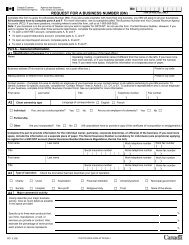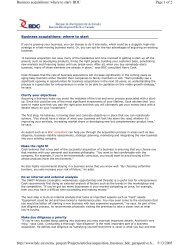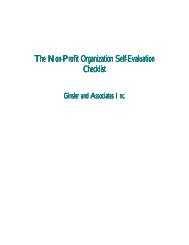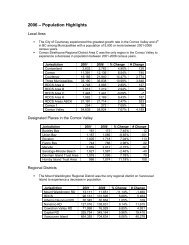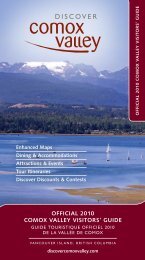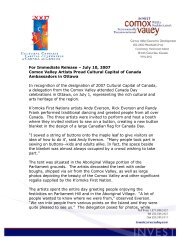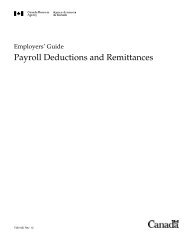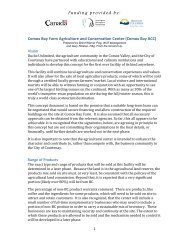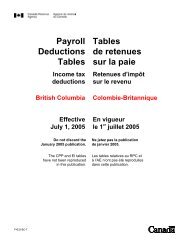qprev_HBB Manual 2.qxd - Small Business BC
qprev_HBB Manual 2.qxd - Small Business BC
qprev_HBB Manual 2.qxd - Small Business BC
You also want an ePaper? Increase the reach of your titles
YUMPU automatically turns print PDFs into web optimized ePapers that Google loves.
costs of all such benefits appear in this financialprojection. Amounts paid once a year can bedivided by 12 and costs spread equally over eachmonth.The table of figures you will have at the end ofthese calculations gives total monthly labourcosts, and one total cost for all labour for theyear.List Your Capital EquipmentCapital equipment in a business means all assetswith useful lives of longer than one year – suchas machines, equipment, vehicles, furniture andcomputers.Capital equipment, as assets in your business, hasvalue that Canada Customs and Revenue Agencyrecognizes will decrease with use. This loss invalue on capital equipment is called depreciation(the equipment is said to depreciate or losevalue). To work out depreciation on capitalequipment, take the original cost of equipmentand divide it by the useful life in months. Forexample, a machine costing $18,000 has a usefullife of five years (60 months). Therefore, themachine’s monthly depreciation is$18,000/60 = $300. This figure is called adepreciation allowance on capital equipment.Contact your nearest office of Canada Customsand Revenue Agency to get current informationon allowable depreciation amounts for differenttypes of assets.The capital equipment section of your financialplan should have:• A list of all capital equipment required to startthe business.• Estimated costs for each piece of equipment,new and used (as you do your research,compare your estimated costs with actualcosts).• Sources of equipment.• The useful life (in months) of each piece ofequipment.• Monthly depreciation (cost divided by usefullife in months) of each item.• Total capital equipment costs and totaldepreciation on equipment.Determine Your Start-up ExpensesExpenses and costs are the same thing. All costsrelated to getting the business to the point whereyou have something to sell are summarized aspart of start-up expenses.These start-up costs are figured separately fromoperating costs, which take over oncethe business opens its doors.Many new businesses underestimate the amountof capital needed to operate and overestimatesales in the first months. An important piece ofadvice is to extend the start-up period to cover upto the sixth month of operation. Sales may beslow after start-up. Be realistic about the point atwhich the business can reasonably be expected togenerate significant sales.Start-up costs include:• Equipment and furniture, also called fixedassets (capital equipment).• Supplies and materials (Note: this is only forstart-up – to get your doors open – not for thewhole first year of operation).• Inventory – stock or product ready to sell onthe first day of business• Fees associated with setting up the business –including professional fees (such as legal andaccounting), charges for producing thebusiness plan (such as desktop publishing andprinting), and costs of securing financing.solutions for small business home-based business 81



